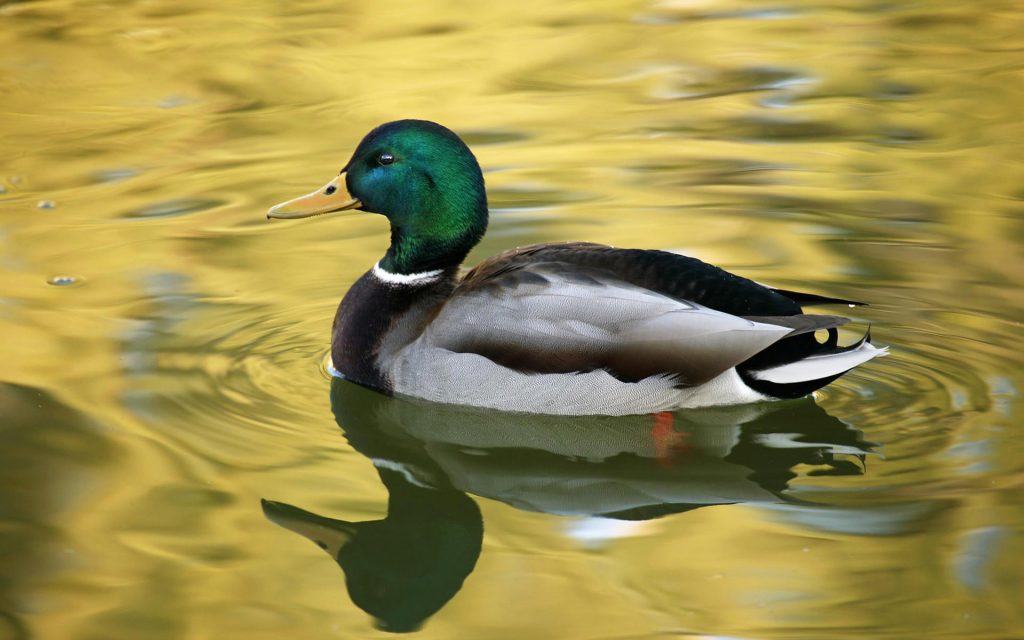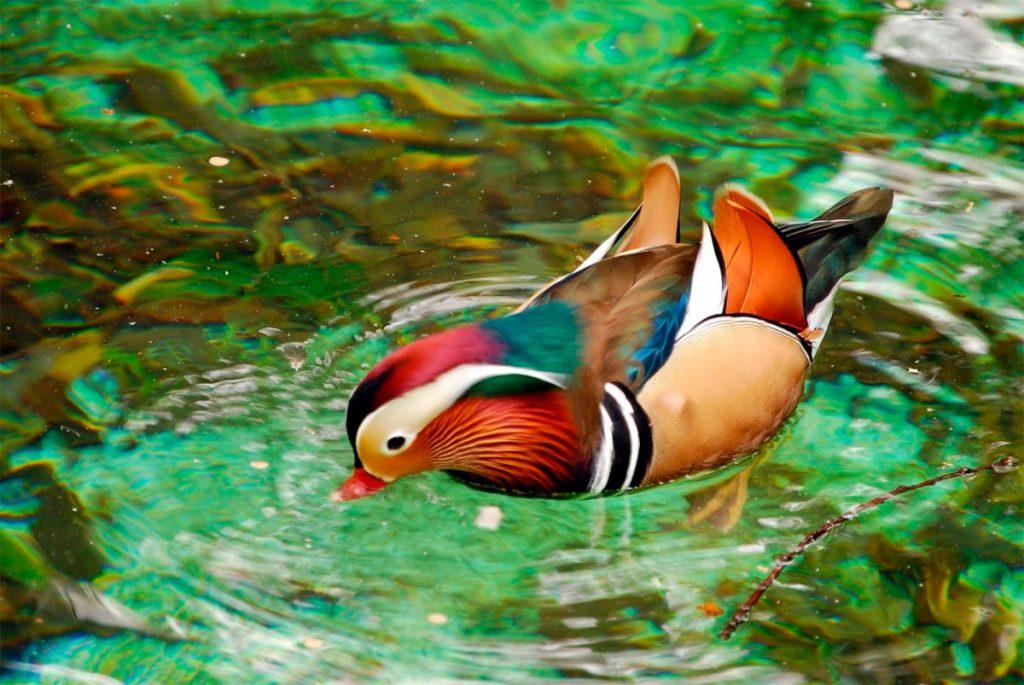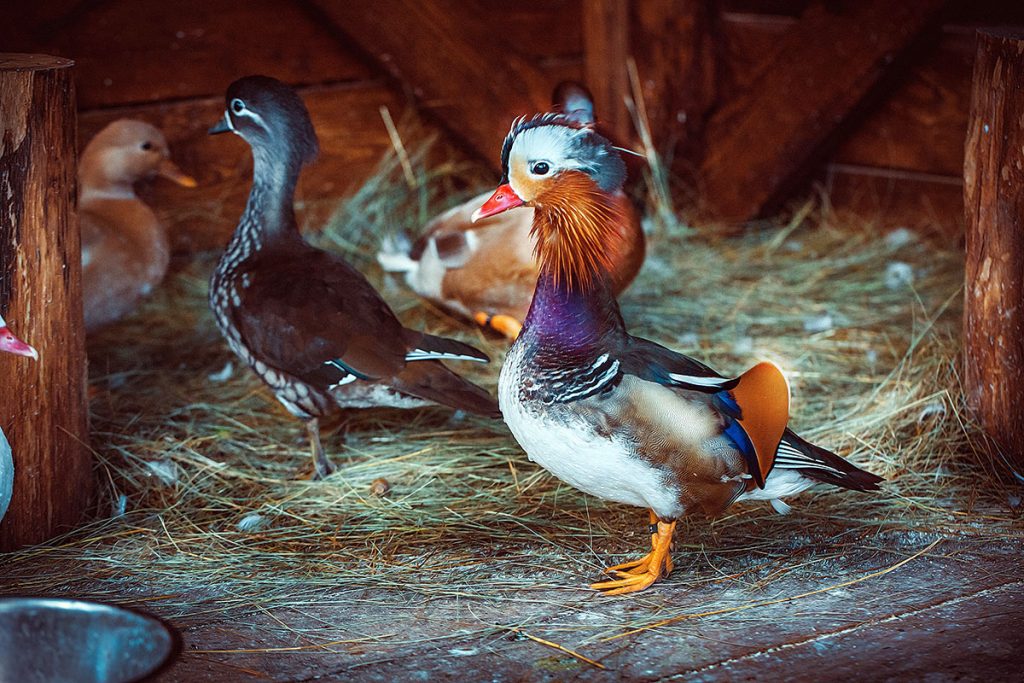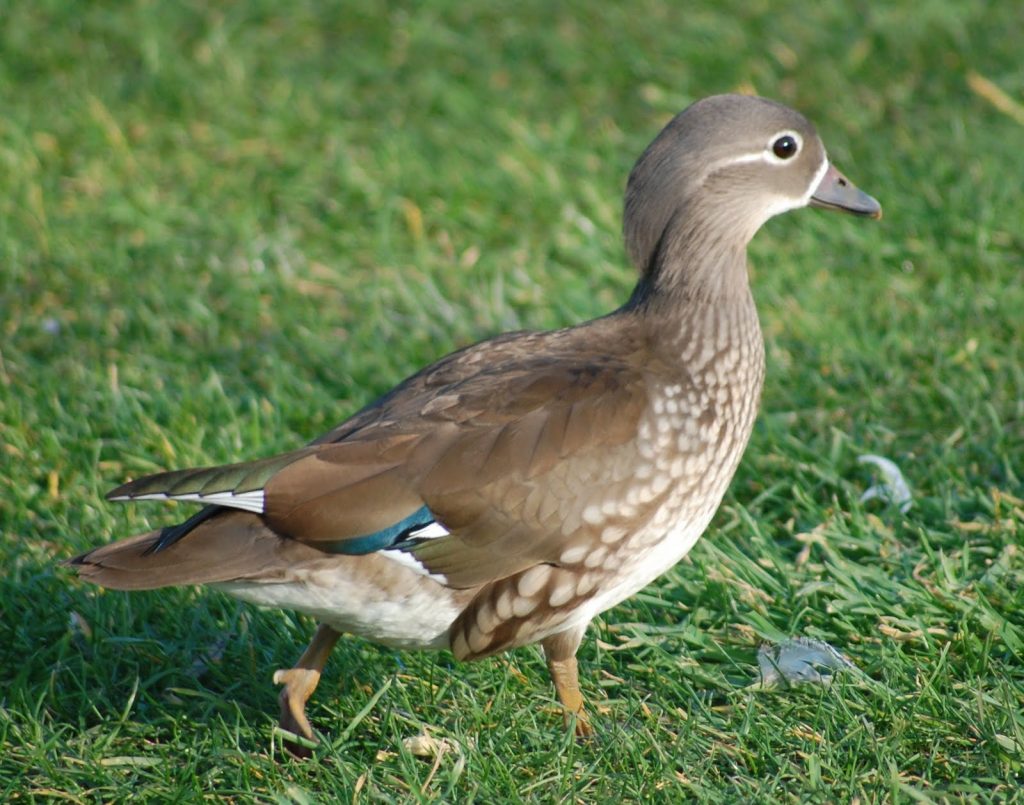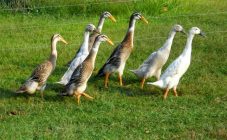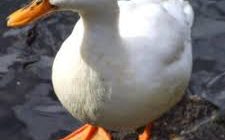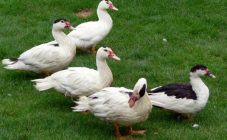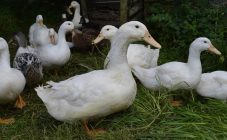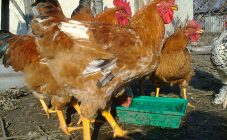Content:
The Mandarin duck is famous all over the world for its beautiful variegated plumage. To admire her every day, some really want to grow a bright bird in their own poultry house. And this is quite possible if all the necessary conditions for keeping the poultry are observed.
History of the breed
In ancient times, noble Chinese nobles wore variegated multi-colored clothes. And they called them tangerines. And these rich people also liked to decorate their pond with colorful ducks, which got their name due to the similarity with the outfits of their masters. There are three more common names for this breed: Chinese, colorful or tangerine duck.
This breed belongs to forest ducks, lives in the eastern territory of Russia: this is Sakhalin, Amur, Khabarovsk regions. For the winter, birds fly to China, Japan and Korea. They settle near rivers and reservoirs, but unlike their relatives, they build nests in trees at a height of up to 10 meters.
Now the bird needs human protection. The multi-colored duck is listed in the Red Book, belongs to the rare species of birds.
External distinctive features
The Chinese duck is very small, its weight ranges from 400 to 800 grams, its body length does not exceed half a meter, and its wingspan is 60 centimeters. It is so customary in nature that females have a color that merges with the environment. The Mandarin duck is no exception: females of this breed look ordinary. They are colored brown on the back, the head is gray with a small tuft, the abdomen is white. The beak is dark olive, the color of the legs varies from rich yellow to gray.
Unusual bright plumage is characteristic of drakes during the mating season, which lasts from September to June:
- The feathers on the head form an interesting volumetric crest of three colors (blue, red, white) and red sideburns, smoothly merging into a long neck.
- The eyes are dark, have a white eyeliner.
- The beak is bright, red or orange.
- The chest has a purple tint.
- The back is decorated with colorful feathers: white, red, green, purple, all of them do not have a clear color border, but smoothly shimmer from one shade to another.
- The tail is orange.
- There are two feathers of an unusual shape on the wings, which when folded resemble a saddle on the back of a male.
- The abdomen is usually white.
After the mating season, the drakes change color to a less noticeable one and practically do not differ in appearance from females.
It is possible to breed mandarin duck in a private household not only for decorative purposes, but also as a meat breed of birds. Some restaurants serve dishes from this poultry, the meat of which has a delicate and delicious taste. You can also find recipes for cooking this bird on the Internet.
Bird care
To determine how to care for this breed at home, you need to study the life of birds in their natural habitat. Find out what the Mandarin duck eats, where it lives, what conditions it needs for a normal life.
First of all, you should create a comfortable aviary. In zoological gardens, where you can find representatives of these breeds, Mandarin ducks are kept in spacious cages with an artificial reservoir.
A shallow pool is suitable, for example, concrete, about half a meter deep and one and a half meters wide.The water needs to be changed once a week; for this purpose, you can use regular tap water. In the cold season, the water must be warmed up so that the pets can bathe freely.
The multi-colored duck is thermophilic, tolerates frosts only up to minus five degrees. In the winter season, it should be kept in a closed insulated room. True, up to the specified temperature, you should not cover the free range of the bird.
Chinese ducks are peaceful, able to get along with other birds. Since in nature birds settle in trees, they need poles and branches on which they will sit.
The favorite food of tangerine ducks is acorns, if possible, you should stock up on this delicacy. Otherwise, homemade food is quite suitable for the birds:
- grain (barley, wheat, corn, buckwheat);
- greens (dandelion, plantain);
- vegetables and fruits (always grated)
- bran and compound feed;
- animal products (bloodworms, insects, frogs, small fish).
It is best to feed the birds in the form of mash. Grain should be taken as a basis, adding vegetables, fishmeal, chalk to it. In winter, sprouted grains, fish or minced meat are a good addition to the diet.
Features of breeding at home
Small boxes must be made as nests:
- bottom measuring 40 × 40 centimeters,
- the depth of the box is about half a meter,
- entrance to the poultry box with a diameter of at least 15 centimeters;
- be sure to attach the perch,
- cover with a removable roof to be able to control the process if necessary.
It is better to place them on the wall, at a height of about two meters, firmly attached. Several of these boxes should be made so that the female and the drake can choose a suitable place for nesting, as it happens in nature.
During the mating season, the proportion of protein foods in the diet is increased by 20 percent, and they also intensively give a mash of grated carrots and boiled porridge. With proper maintenance and feeding, the female will lay eggs in March or April. In total, the female lays 9-12 eggs.
The whole process lasts about a week, after which the duck sits on the eggs. Chicks appear in a month. This is where a problem might arise. In the experience of farmers, females born in captivity do not have a maternal instinct. You can use an incubator and raise chicks there. True, this method has a huge disadvantage: the chicks are very shy, in a stressful situation they start to run, do not eat and die. Therefore, it is not a fact that the kids will survive.
There is another option: if the female did not want to incubate eggs, it is better to find another hen, for example, a chicken or a goose, which can replace the mother for duck babies. In this case, the probability of raising healthy offspring is high.
The hatched chicks are active from the first day and immediately leave the nest. Following their mother, they themselves look for seeds and small insects.
If the ducklings are raised in an incubator, they need to be force-fed after they have dried. They are given a wet mash of chicken feed mixed with milk powder, and forced into the throat. Thus, their stomachs start to work.
Pros and cons of tangerine duck
The Mandarin duck is increasingly bred in private subsidiary farms, since it has a number of positive qualities:
- Has a peaceful character.
- Picky about food.
- Beautiful and exotic in appearance.
But before you start a Chinese duck in your poultry house, you should take into account a number of disadvantages of this breed:
- It is thermophilic and does not tolerate severe frosts.
- Needs a pond every day.
- Lack of maternal instinct in unwitting individuals.
- Shyness and poor survival of ducklings in captivity.
The mandarin duck is very attractive as a poultry. She will perfectly decorate the pond, she will delight with her beauty every day. True, such an exotic pet requires increased attention and proper care. Therefore, before you get a couple of Mandarin ducks, you need to evaluate your capabilities in caring for these beautiful birds.
